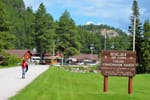College campuses across South Dakota have a mostly back-to-normal feel so far this academic year, but the COVID-19 pandemic remains a top concern for many students, faculty and staff.
University leaders want students to experience a typical collegiate year with indoor and outdoor pep rallies, sporting events and group study sessions. Instructors want to offer engaging classroom experiences. Students want to live and learn without limitations or distractions.
Most of that is happening so far this fall. And yet, worry over the potentially deadly coronavirus still simmers just below the surface.
Administrators remain vigilant in monitoring infections and stand ready to increase coronavirus restrictions. Most institutions are offering financial incentives and prizes to students who get vaccinated. Masks are required at some colleges but not in the public university system, where they are infrequently used.
Meanwhile, administrators in the state system are blocked from requiring vaccinations, so they remain unsure of vaccination levels at a time when COVID-19 cases across the state are rising again.
The Centers for Disease Control and Prevention recommends that everyone at colleges and universities wear masks indoors, even if they are fully vaccinated, in locales with substantial or high transmission of the coronavirus, which includes most of South Dakota.
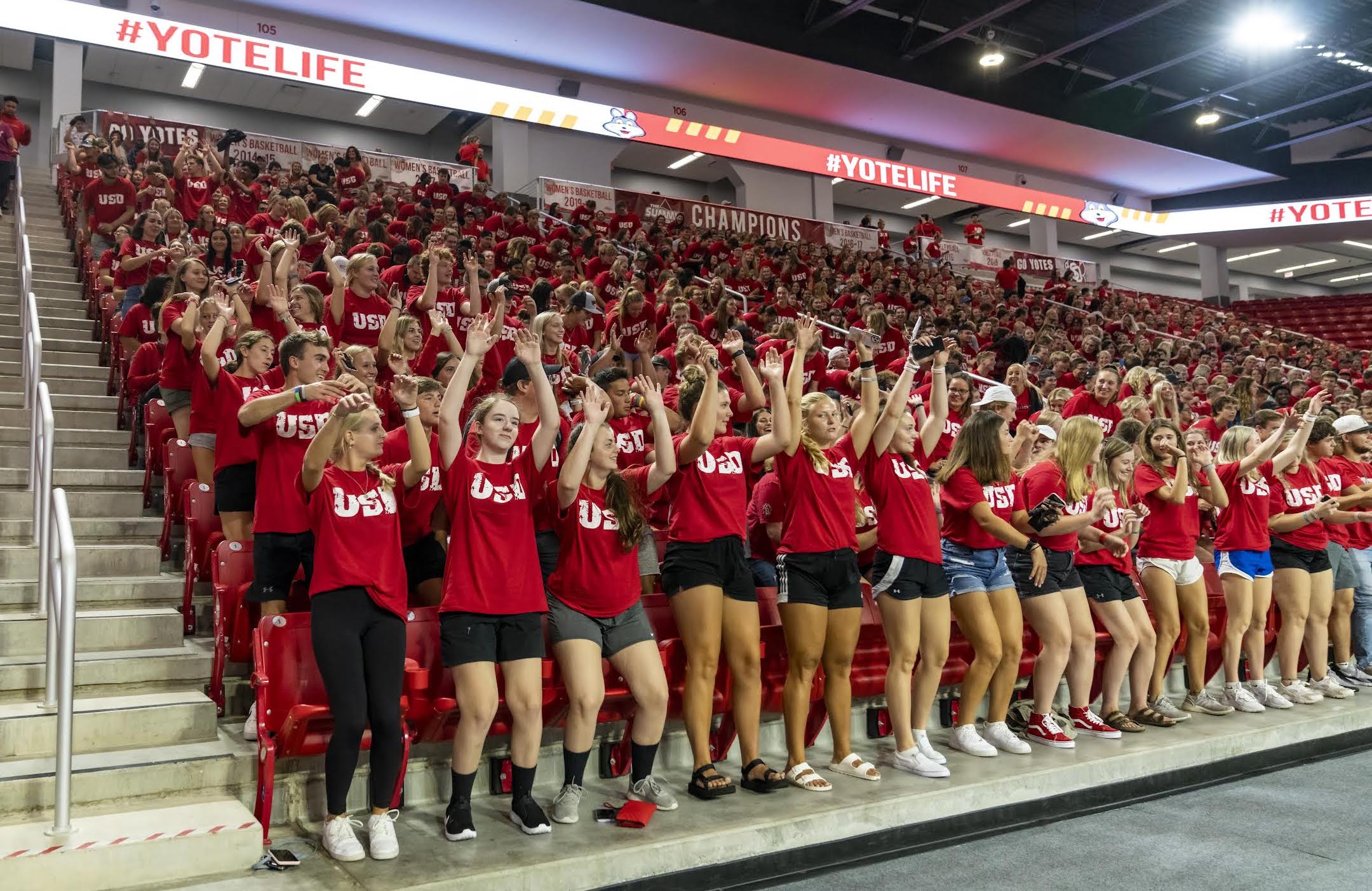
Some students are feeling the emotional strain of uncertainty or worry over becoming infected.
More students than ever are using the counseling services at Black Hills State University in Spearfish, said President Laurie Nichols. The university is considering adding more staff to that department.
“There has been a lot of traffic into our student counseling,” Nichols said. “Those areas are being taxed. They’re having a hard time keeping up.”
BHSU held a mass testing event at the start of the school year because western South Dakota is being “hit hard” with COVID-19 cases, Nichols said. A noticeable peak in cases a few weeks after the Sturgis motorcycle rally in August coincided with the start of the semester, which “wasn’t great timing for us,” she said.
“Last year, we didn’t know what we were doing. We did the best we could,” Nichols said. “We hardly had testing kits when school started last year. There weren’t vaccines. We’ve been through a year and we’re all much calmer and reasonable. Better at problem solving now. Everybody was on edge last year for sure.”
Positive cases, reported on university and college websites, are lower than at this time last year. As of Sept. 21, the state’s colleges, universities and technical schools are reporting a total of 201 cases among students and 70 among staff, according to the South Dakota Department of Health.
According to individual public university COVID-19 dashboards, about 90 people are in quarantine or isolation, down from the hundreds of mandatory isolations at this time last year.
“I really believe we’re not in as bad of shape as last year,” said University of South Dakota COVID-19 task force leader Kevin O’Kelley. “It’s not over, but I think the things that degraded the school experience last year are under control this year.”
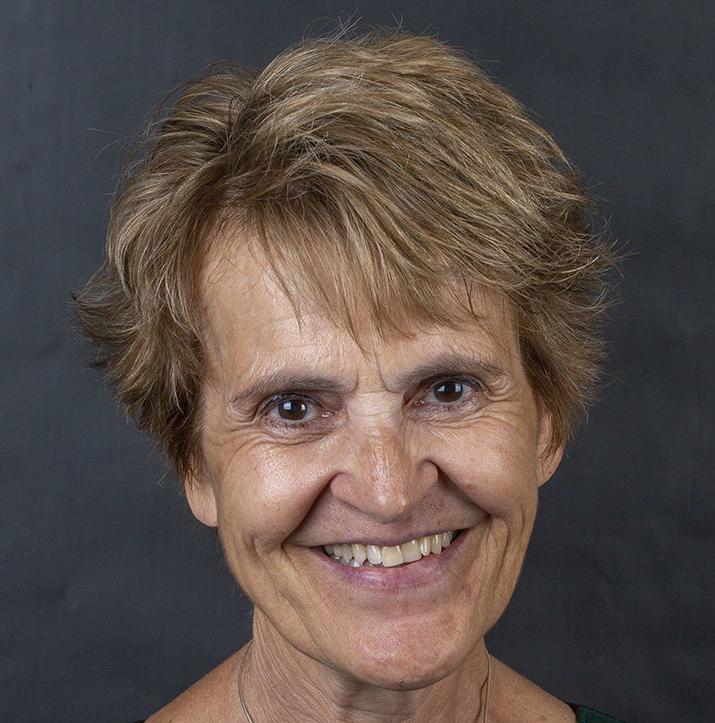
“There has been a lot of traffic into our student counseling. Those areas are being taxed, and they’re having a hard time keeping up.” -- Black Hills State University President Laurie Nichols
Most higher education institutions in the state are not requiring masks, and none is mandating vaccines, though most are encouraging both practices to mitigate the spread of COVID-19 cases, which have been on the rise in South Dakota since late July.
State medical experts have noted that the average age of people infected with COVID-19 has fallen in recent months as older residents have gotten vaccinated and vaccine hesitancy remains solid among many young adults.
Colleges in the South Dakota Board of Regents system are not limiting capacity at events or classes, and the majority of institutions are not recording absences due to illness or virus exposure, as some did last year.
Across South Dakota’s colleges, universities and technical schools, 4,171 COVID-19 cases were reported among students and staff in 2020-21, according to a back-to-school presentation prepared by the South Dakota Department of Health. Seven people tied to an institution did not recover from the illness, according to the presentation.
Nationally, about 10 states have a mask mandate in K-12 schools as of August, according to the Pew Research Center. Some individual universities or colleges in every state have issued mask mandates. South Dakota Gov. Kristi Noem has signed an executive order banning vaccine passports and has strongly opposed mask or vaccine mandates.
As of Sept. 21, 2021, the Chronicle of Higher Education tallied 1,053 campuses across the country that require vaccination of some students or staff. An Associated Press analysis showed that about half of the country’s 50 largest public university campuses are requiring vaccination.
While a COVID-19 vaccine isn’t required for enrollment or employment at higher-education institutions in South Dakota, most colleges are encouraging campus communities to get vaccinated.
Students who attend an on-site vaccine clinic or show proof of vaccination could be eligible for prizes such as hundreds of dollars in gift cards, tablets or Nintendo Switches.
Students who need a clinical rotation to graduate may be required to be vaccinated to go into the hospitals as Sanford, Avera and Monument health groups begin to implement vaccine requirements for employees.
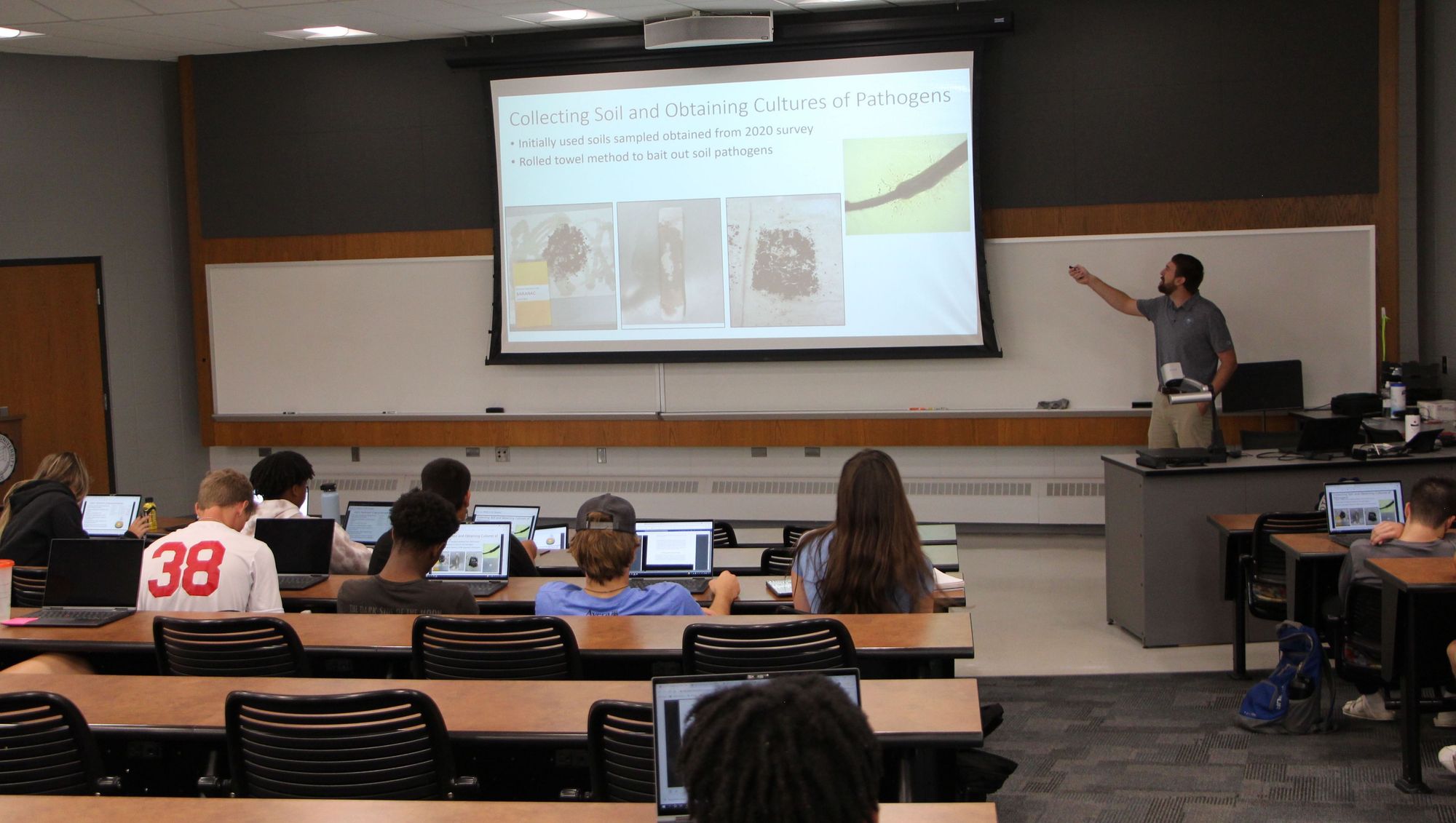
The regental universities don’t know exactly how many of their students or staff are vaccinated because the vaccine isn’t a requirement, said Board of Regents director of communications Janelle Toman.
The leaders of some state universities, though, estimate that campus vaccination rates are higher than the state average.
At a student government meeting at the University of South Dakota on Aug. 31, Athletic Director David Herbster told student government leaders that 80% of student athletes there had been vaccinated.
O’Kelley said that based on the low case numbers at the university and strong response to the university’s vaccine clinic, he predicts more than half of the student body and a higher percentage of staff are likely vaccinated.
Campuses are busier this year and feel more lively, university leaders said, largely in part due to an increased access to testing and vaccines, which are approved for anyone age 12 and up. More students are walking on campus, classrooms are full and sporting events are back in full force.
“Our students as well as our employees are just in it together,” said Angi Kappenman, Dakota State University vice president for human resources. “Students want to have that university on-campus experience. Everybody is willing to do their part so we can keep that experience going.”
USD peaked at around 230 active COVID-19 cases in early September 2020; this year active cases for both staff and students have stayed under 25.
The university did not want to be “caught unprepared” this year, O’Kelley said, and is offering daily, free rapid testing in the campus hub. Getting students who test positive out of the population faster has helped reduce the spread of the virus, he said. O’Kelley estimated that the university population has a higher vaccination rate than the general state population.
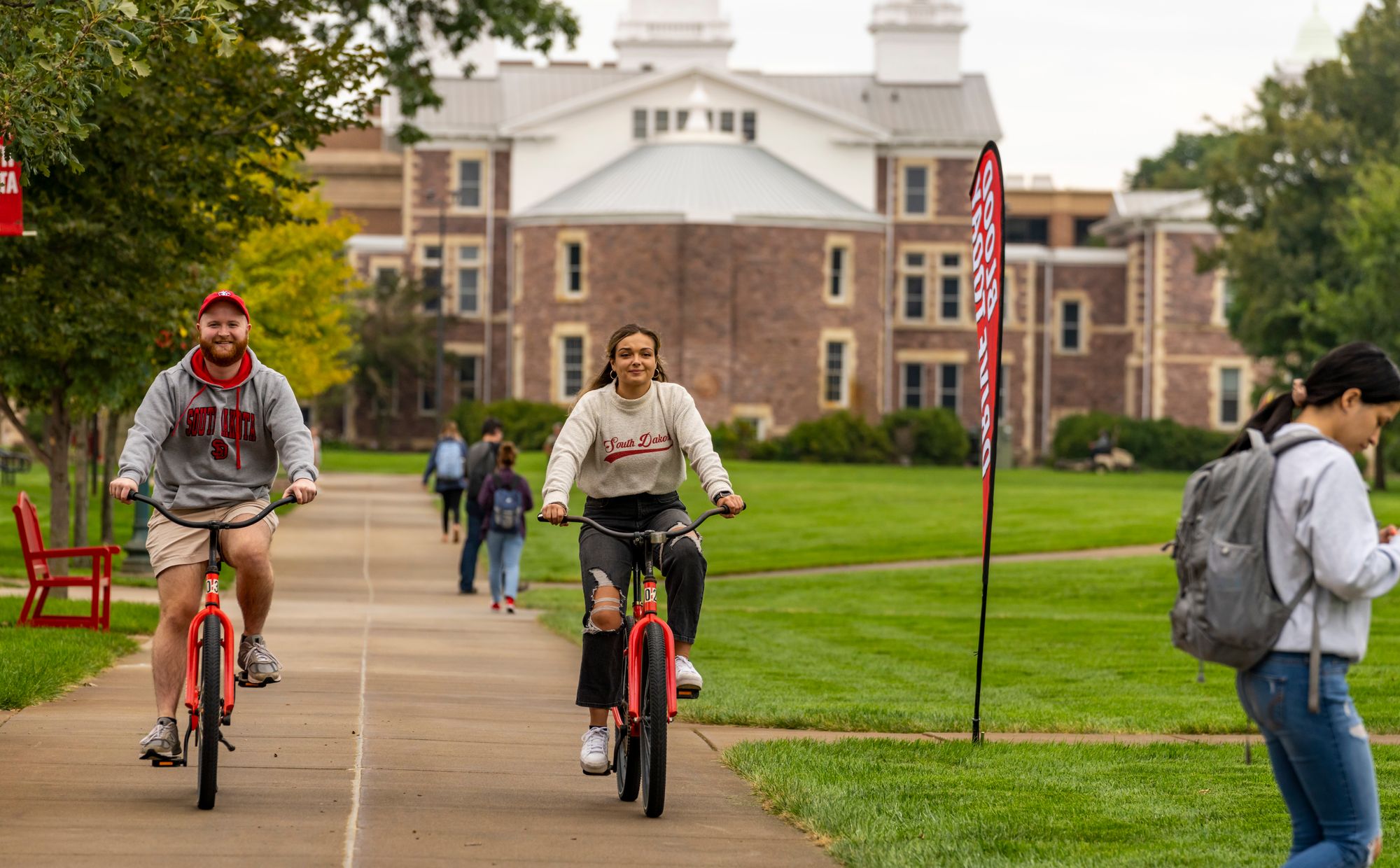
The majority of counties in South Dakota are considered to have a high transmission rate of COVID-19, or when the test positivity rate is 10% or higher. The only counties with low transmission as of Sept. 17 are Sully, Potter and Jerauld. Ten other counties are considered to have substantial spread, or a test positivity rate between 8% and 9.9%.
Some non-regental or private schools across the state are requiring masks or are still mostly learning virtually.
Mount Marty University in Yankton is requiring masks in public spaces, classrooms, offices and hallways because of the “high community transmission” classification in Yankton, Codington and Minnehaha counties, according to the university website.
Dakota Wesleyan in Mitchell estimates that about 60% of its student body and about 95% of staff members have received a vaccine. The private college doesn’t have a mask mandate at the moment, but interim President Theresa Kriese said that could change if the delta variant of COVID-19 continues to spread throughout the state. The positivity rate for Davison County, where Dakota Wesleyan is located, is about 12%, or “high community spread,” according to the state.
“We have prepared our campus community for the possibility that may happen,” she said. “Our goal is to keep everybody as safe as we can and keep the learning moving forward.”
Augustana University in Sioux Falls is requiring masks indoors. The university is also tracking how many of its students are vaccinated. About 89% of the staff and 81% of students are fully vaccinated, according to self-reporting and vaccine clinics, said Suzie O’Meara Hernes, COVID-19 response coordinator at Augustana.
“For us, it’s making sure everybody understands the role we play in the broader community,” she said. “The vaccine is not only keeping yourself safe, but keeping your whole community safe and being respectful of protocols in place.”
Oglala Lakota College, on the Pine Ridge Indian Reservation, is still holding most classes over the Zoom online platform. The Oglala Lakota Sioux Tribe announced on Sept. 18 that the reservation would be on a shelter-in-place order because of a 10% positivity rate of cases in the area. The tribe also ordered on Sept. 14 that all K-12 schools would be in quarantine until Sept. 28.
The college is taking the most aggressive approach in keeping staff and students safe, said President Thomas Shortbull.
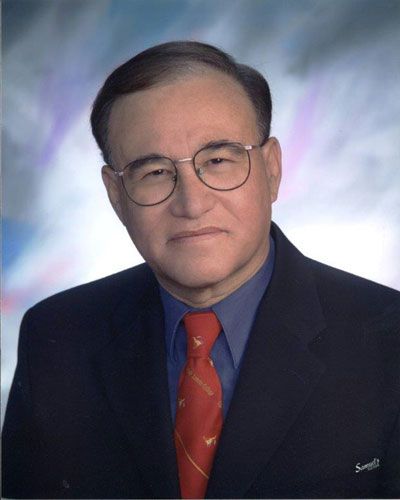
No students have reported contracting COVID-19 as a result of a college activity, Shortbull said.
“We wanted to minimize any potential for our students to get covid by coming to classes,” Shortbull said.
The decentralized nature of Oglala Lakota College made it easier to continue the online delivery of classes, something students seem to prefer, said Shortbull. Each of the reservation’s nine communities has a college building so students can stay home and attend classes. The OLC has just two dorms, which also made mitigation efforts easier, Shortbull said.
All of Oglala Lakota College’s staff members are vaccinated, Shortbull said, and he estimates about 75% of students have received a vaccine.
“The reason we are doing all this is I see colleges across this country, I see football games, thousands in the stadium, you just kind of shake your head and think, ‘There’s potential for people to get covid,’” Shortbull said.
“For us, it’s making sure everybody understands the role we play in the broader community. The vaccine is not only keeping yourself safe, but keeping your whole community safe and being respectful of protocols in place.” -- Suzie O’Meara Hernes, COVID-19 response coordinator at Augustana University
Sophia Lewis, a 20-year-old student at Dakota State University, said the campus has been livelier, but she can tell those around her are fatigued by the pandemic.
“The whole world is tired of dealing with COVID and that’s no different on campus,” she said.
The majority of her college experiences have come during a global pandemic, and Lewis receives regular emails about cases on campus and quarantine procedures.
Her freshman year at Dakota State ended abruptly when universities across the state announced they would lengthen their spring breaks by one week, before sending students home for the rest of the semester. That hampered her social life and ability to focus on her schoolwork, she said.
“I did probably end up with less socialization,” she said. “I definitely was not cut off by any means, but it still was kind of a bummer.”
The honors student from Winner said she’d always been a good student. The sudden switch to virtual learning was tough on her attention span, she said.
“My grades stayed about the same, but my ability to pay attention, to absorb the content and interact in class was definitely hindered a little bit,” said Lewis, 20, who is scheduled to graduate in the spring with a degree in computer science and plans to enter a graduate program.
She was never considered a close contact with anyone who tested positive for COVID-19, she said, and she kept those she interacted with to her tight group of friends throughout the last two years.
She’s hoping the pandemic eases so she and her friends can experience a year of what she describes simply as “normalcy.”




